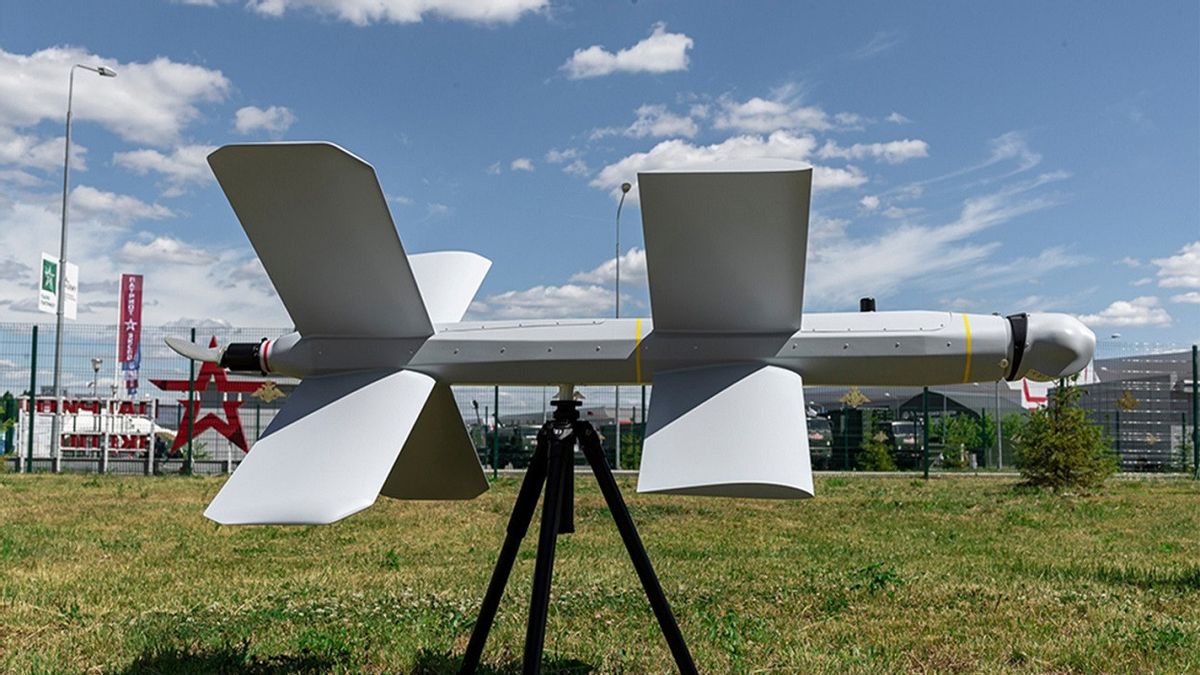Russia has released footage from the video feed of its Zala Lancet-3 loitering munition (or Kamikaze drones) flying into Ukrainian targets in what appears to be the first direct camera footage from such UAVs in the entire war.
In this footage, you can see the Zala Lancet-3 diving toward its target. pic.twitter.com/oUoaObko0m
— Babak Taghvaee – The Crisis Watch (@BabakTaghvaee1) July 20, 2022
The two different engagements show the feed from the kamikaze drones’ front electro-optical device, first observing their targets from a distance and then rapidly closing in. However, just before their impact, another overhead drone captures the strike.
Kamikaze drones, like the Israeli Harop, first hit world headlines in 2020 during the Nagorno-Karabakh war when Azerbaijan used them against Armenian surface-to-air missile batteries and artillery encampments.
China’s 2nd Stealth Fighter – Shenyang J-35 ‘Breaks Cover’; Expected To Operate From Type 004 Aircraft Carrier
The Harop has a range of 997 kilometers and carries a 22-kilogram warhead. It can fly deep into enemy territory and threaten armored vehicles and heavily fortified positions.

Then the US Switchblade (300, 600, and 700) series of loitering munitions are currently the most popular ones, of which 100 had arrived in Ukraine by May.
These were the Switchblade 300, tube-launched with fold-out wings that cruise around 100 kilometers an hour, carrying cameras, guidance systems, and a warhead to dive bomb and hit the target themselves.
They can be used to destroy tanks, light armored vehicles, bunkers, and other lightly armored enemy infrastructure.
The Russian Lancet-3, on the other hand, is a lightweight loitering munition with a three-kilogram warhead and a 40-minute endurance made by ZALA and Kalashnikov. It is a further development of the KYB Kub (Cube) loitering munition, a flying-wing design that was combat tested in Syria in 2019.
Nightmare For US? China Follows Russia’s Footsteps; Developing Its Own Nuclear-Powered ‘Super Torpedoes’
The Lancet-3 has a take-off weight of 12 kilograms and is launched via a rail-mounted catapult system. It has two sets of X-shaped wings that can be folded and packed into a carrier trunk. There is also footage of the Lancet-3 being tested against the Hayat Tahrir al-Shams (HTS) terrorist group in Syria.

Lancet ‘Strikes’
One video shows a reticule from an electro-optical camera observing a house from above, behind which there appear to be infantry fighting vehicles. Then the camera zooms out, and the feed shows the target rapidly closing, meaning the Lancet is hurtling towards it.
As one would expect, however, the feed doesn’t cut and display static upon impact but cuts to an overhead feed from presumably another drone capturing the attack.
Another video shows a feed from Zala-3 loitering above a tree line at the edge of a field with heavy white smoke billowing from the entire woods and bush.
Reaching The ‘Farthest Point’ – Chinese Scientists Bat For Neptune Mission; Aim To Take Over Where NASA’s Voyager Left
This indicates heavy action to have taken place there between Ukrainian and Russian troops. Here too, the feed shows the drone speeding towards the target as the latter rapidly closes in before it cuts to another overhead drone recording the attack.
A small white object – the Lancet-3 drone below – flies into the treeline and sets off a small explosion. Some Russian social media networks claimed this was a Ukrainian artillery position.
Russians have released a footage showing the use of Zala Lancet-3 loitering drones against #Ukrainian Forces during the war. Lancet-3 with 40 minutes flight endurance has 3kg of warhead. pic.twitter.com/l0FdyfC8IB
— Babak Taghvaee – The Crisis Watch (@BabakTaghvaee1) July 20, 2022
On July 16, a photo of a downed Lancet-3 also went around on Ukrainian networks, claiming it was shot at by Ukrainian Armed Forces (UAF) soldiers in the Zaporizhzhia region, with that picture being the first confirmation of the system’s usage in Ukraine.
It seems like Russia has kept its larger drone systems out of the war in Ukraine, unlike the UAF heavily relying on the Turkish TB-2 Bayraktar.
They were shot down in large numbers, leading UAF units to limit their usage, resisting pressure from their senior commanders. It appears Russia can achieve its goals using such lightweight, cheap solutions as its ground troops and artillery have successfully achieved many battlefield goals.
It won’t be too far-fetched to imagine Russia releasing the footage as a marketing tactic as well, piquing the interest of prospective international buyers.
- The author can be reached at satamp@gmail.com
- Follow EurAsian Times on Google News




